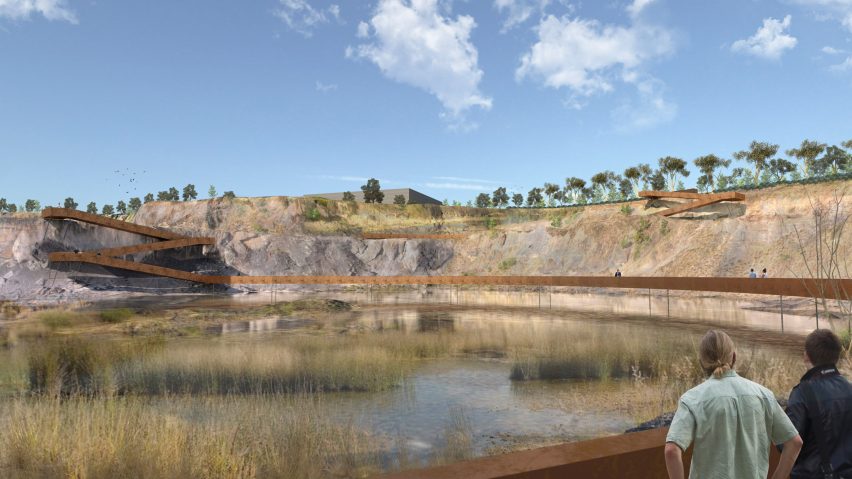
Landscape architecture and industrial design feature in UNSW Sydney's varied student show
Landscape design that explores urban nature and an ergonomic chair designed for musicians are among the varied student projects exhibited in part two of the UNSW Sydney's school show.
Each project in the digital showcase was completed by pupils enrolled across the Landscape Architecture, Industrial Design and Computational Design courses, which all form a part of the Australian university's diverse Built Environment department.
UNSW Sydney
University: UNSW Sydney
Department: Built Environment
Courses: LAND – Landscape Architecture, IDES – Industrial Design and CODE – Computational Design
School statement:
"UNSW Built Environment's vision is to shape future cities – cities that are great, connected, and inclusive. We want to inspire and challenge tomorrow's city makers by offering a comprehensive range of specialised undergraduate, postgraduate and post-professional degree programs that few universities can match.
"As a student, you will shape your own path to a global career. Through education that is both broad and deep, you will be able to navigate flexible pathways within our programs. We offer you an interdisciplinary education, connected to the real world through projects set by industry, cross-faculty initiatives, internships, research projects and exchange."
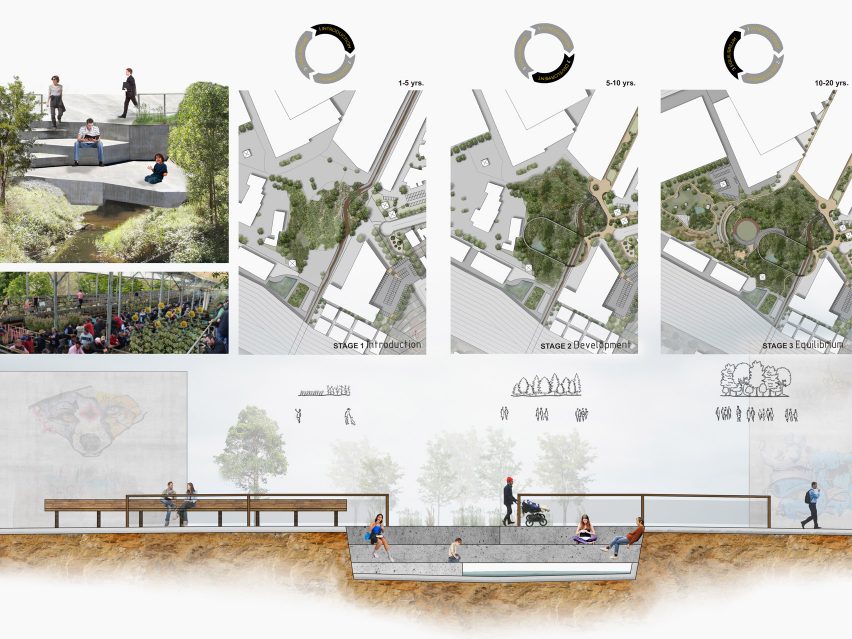
Continuum by Hayley Farrell
"The landscape narrative Continuum is the third chapter in the diverse cultural history of Saleyards Creek and surrounds in Homebush, Sydney. Through a hierarchy of diverse programs straying out from the creek and referencing the history of the site, a new post-industrial landscape emerges as a social keystone of the area, reconnecting Homebush to its waterways and industrial past.
"These spaces have been designed within a successional framework where ecology and culture grow in unison. This idea connects the landscape concepts of ecological succession (process driven) and landscape narratives (story driven) through three key stages: introduction, development and equilibrium."
Student: Hayley Farrell
Project: Continuum
Course: LAND – Landscape Architecture
Course level: Undergraduate
Email: [email protected]
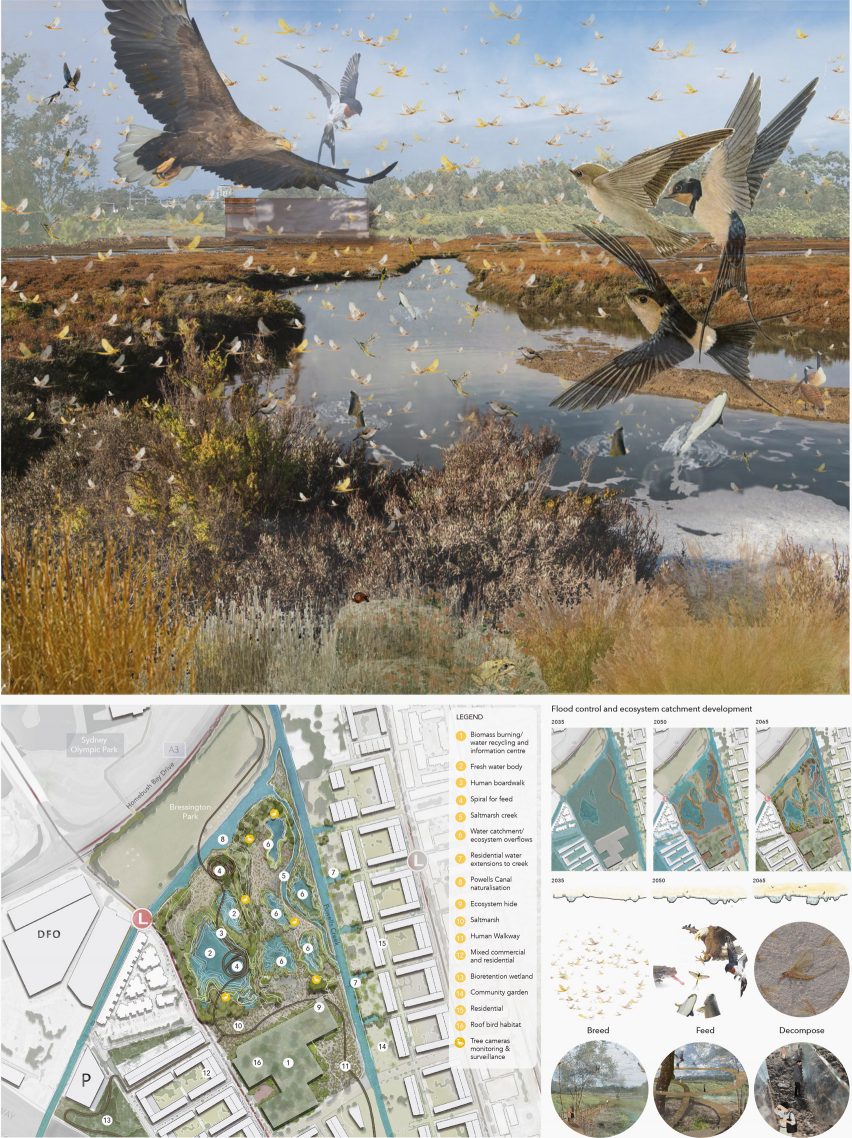
Nature's Protest by Ranine Hamed
"No matter how big or small, every organism plays a role in assuring the function of the biosphere. Nature's Protest challenges the position of non-human organisms within the human-dominated landscape. It captures the notion of biocentrism – the perception that humans are a part of the biosphere, rather than superior to it – through the transformation of Mason's Park and Wetland into a Mayfly habitat that promotes protest through nature's spatial takeover.
"To reinstate the human position in the biosphere, humans are subtly forced to be participants via a choreographed path that encompasses the different stages and experiences of the Mayfly's life cycle."
Student: Ranine Hamed
Project: Nature's Protest
Course: LAND – Landscape Architecture
Course level: Undergraduate
Email: [email protected]
Website: raninehamed.godaddysites.com
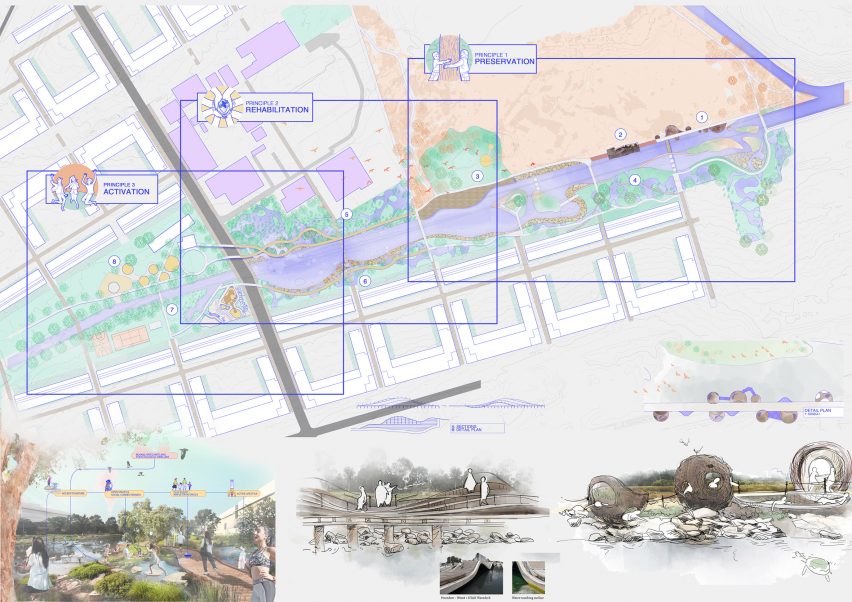
Tides by Shuyi Gong
"This project reimagines Powell's Creek and Mason Park through an exploration of play and three tides of Powell's Tide: the Sea Tide flowing through Powell's Creek, the Ecological Tide, which refers to the ecological dwellers and how they adapt to the landscape, and the Social Tide, human circulation and interaction within the landscape.
"Under three principles of preservation, rehabilitation, and reactivation, the poetry of play provides an intriguing journey through the saltmarsh wetland along biomimicry-designed boardwalks. Visitors are encouraged to explore different play types that mimic the appearance or behaviour of ecological communities, and thus regenerating empathy with local inhabitants."
Student: Shuyi Gong
Project: Tides – Play Poetry as an Ecological Process
Course: LAND – Landscape Architecture
Course level: Undergraduate
Email: [email protected]
Tutors: Basilios Papaioannou, Rohit Iyer and Andrew Langford
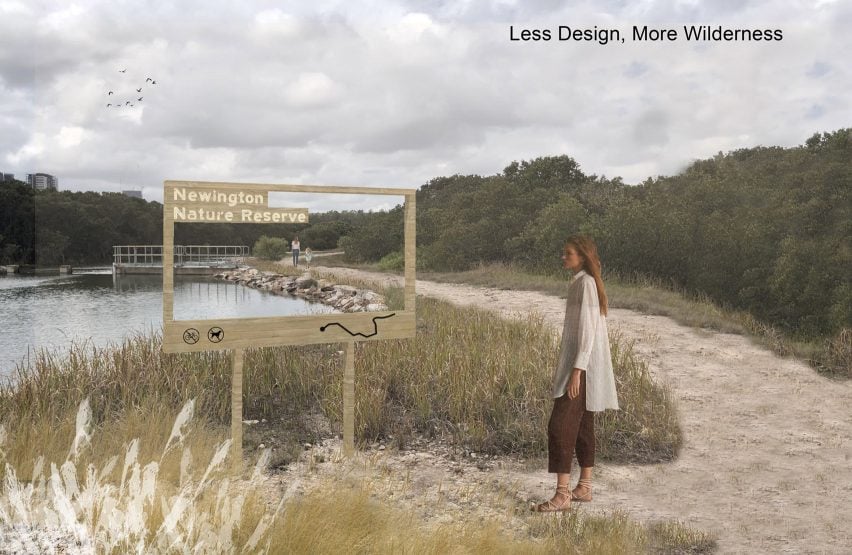
Urban Wilderness as Urban Acupuncture by Freya Sun
"Urban Wilderness as Urban Acupuncture is based at Newington Nature Reserve in Sydney Olympic Park, but offers a framework for the metropolis-wilderness. It aims to refresh community attitudes towards wilderness and bring city back to wilderness and wilderness back to city.
"Targeted and carefully considered design interventions allow existing natures to respond and grow. Unassuming path systems and sensory spaces help people to understand what wilderness is and experience wild characteristics of dynamism, ambiguity, process and mutability. "
Student: Freya Sun
Project: Urban Wilderness as Urban Acupuncture
Course: LAND – Landscape Architecture
Course level: Postgraduate
Email: [email protected]
Website: issuu.com/freyasun/docs/studio_p2
Tutors: Catherine Evans
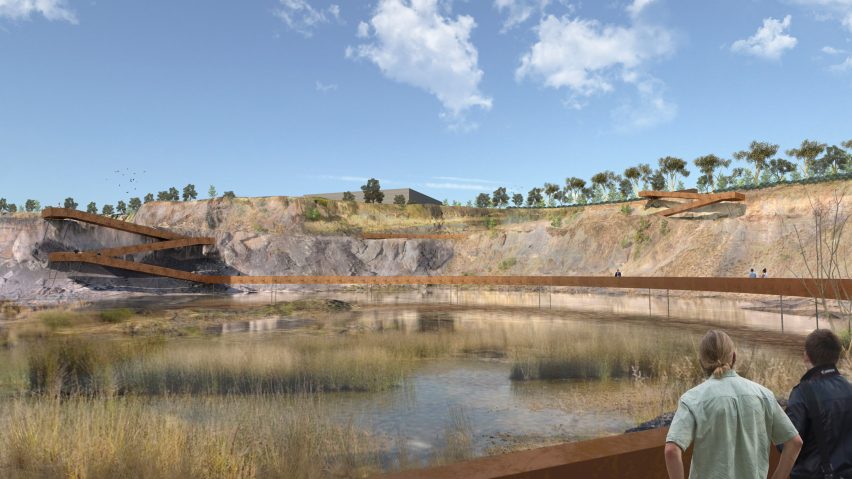
Step In and Out by Zilong Ma
"Step In and Out explores the aesthetic considerations in the post-industrial landscape of the Brick Pit at Sydney Olympic Park. Through a review of aesthetic theory and case studies, a set of design and research methods was established with wide applicability to help designers better protect and reuse post-industrial cultural and aesthetic landscape values.
"By means of evaluation model and mapping, the material, spatial and temporal qualities of the site can be harnessed to capture a point of tension between picturesque and dialectical landscape aesthetics."
Student: Zilong Ma
Project: Step In and Out
Course: LAND – Landscape Architecture
Course level: Postgraduate
Website: https://issuu.com/zilongma1996
Email: [email protected]
Tutor: Catherine Evans
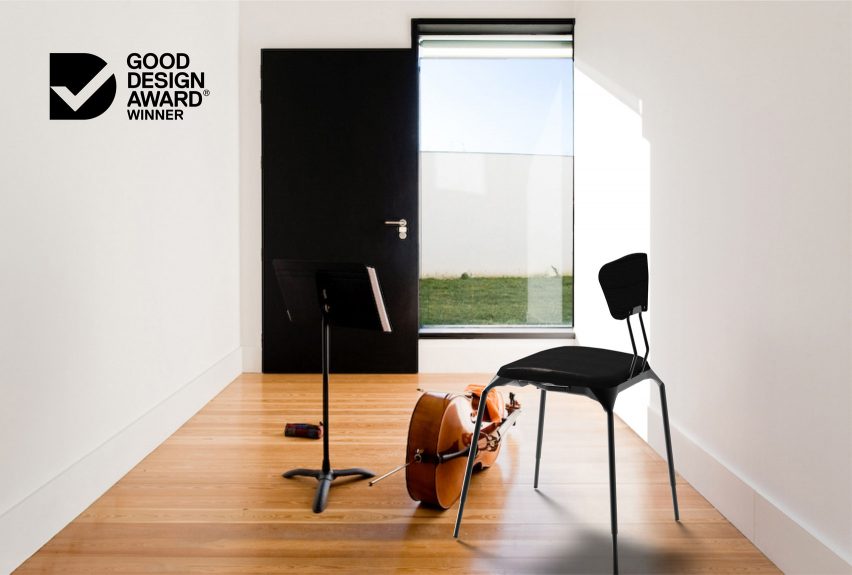
Misura by Karen Kong
"Half of the musicians in Sydney's professional orchestras experience musculoskeletal injuries due to the high physiological demands of the job. The chairs that they sit on significantly influence their posture and overall physiological health.
"The Misura chair is a significant improvement to the leading orchestral chair on the market. The chair legs can be moved up and down and the backrest can be moved in four directions. Misura is lighter, slimmer, more quietly adjusting, easily stackable, user intuitive, and elegant. It allows musicians of all shapes and sizes to easily adjust to their exact preference every time."
Student: Karen Kong
Project: Misura
Course: IDES – Industrial Design
Course level: Undergraduate
Email: [email protected]
Website: https://karenkong.co
Tutors: Gonzalo Portas and Andrew Simpson
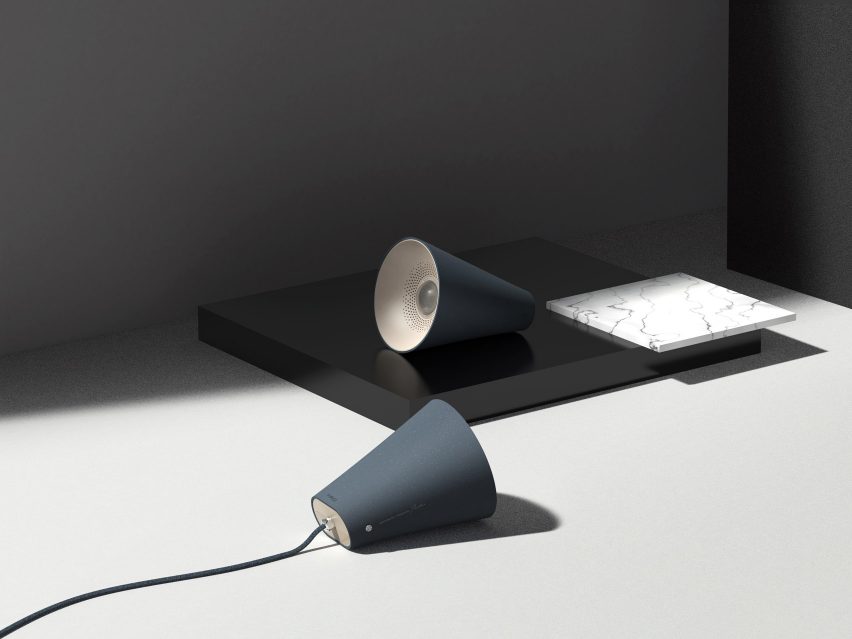
01 by Jiachen Liu
"01 promotes an enjoyable sleep experience and boosts sleep quality, through reducing sleep latency and enhancing deep sleep. It utilises multiple therapy techniques including cognitive behavioural therapy, sound therapy, and light therapy for different situations.
"To improve the user's overall sleep experience, 01 operates in three phases: pre-bed unwinding, deep sleep enhancement, and natural awakening. The accompanying app offers a range of ambient light and sound effects such as pink noise, white noise and music to help and guide the user relax, focus, and meditate. The device could also be used as a Bluetooth speaker and a pendant light."
Student: Jiachen Liu
Project: 01
Course: IDES – Industrial Design
Course level: Undergraduate
Email: [email protected]
Website: https://www.jiachenliu.com
Tutors: Gonzalo Portas and Andrew Simpson
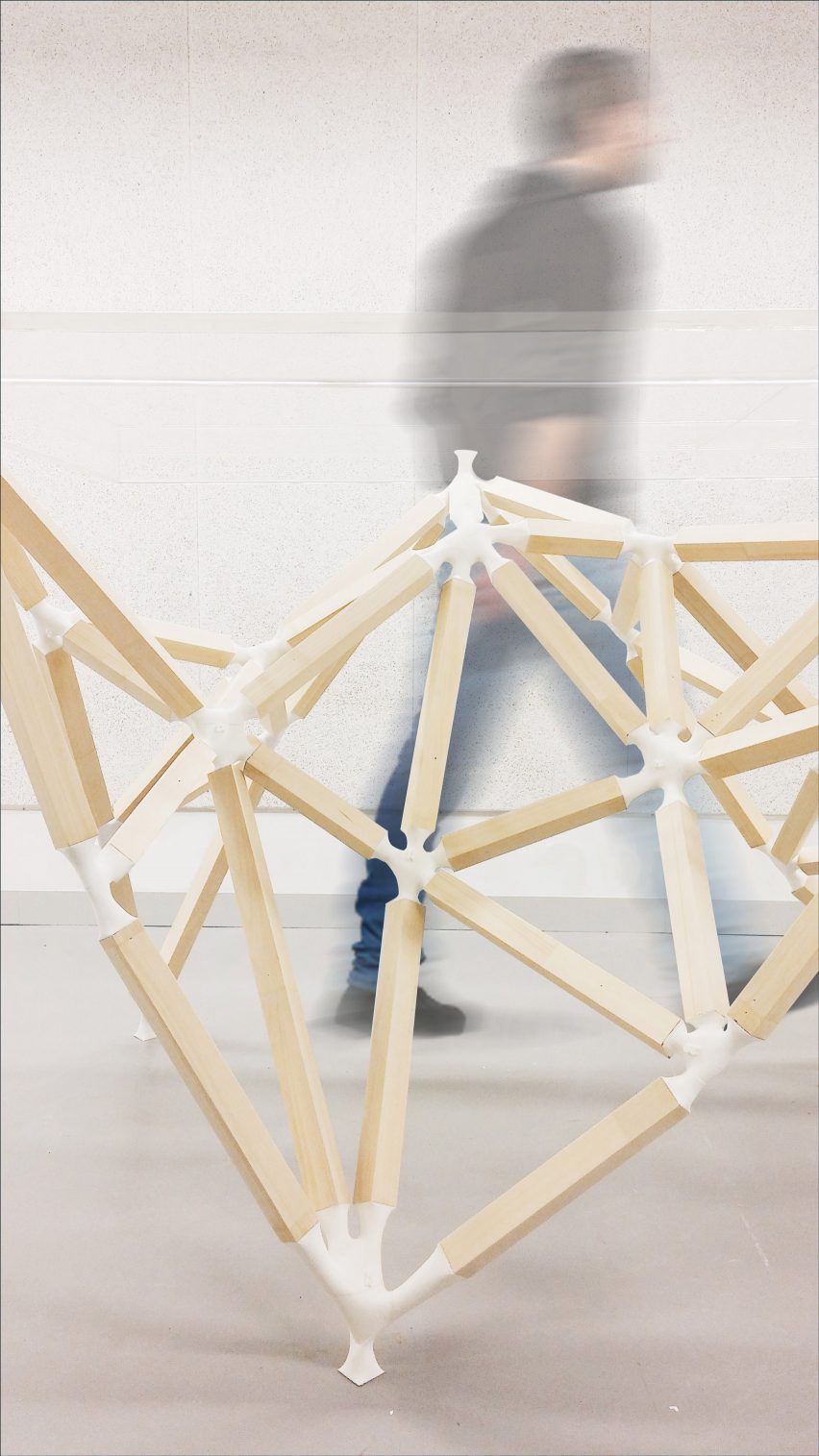
Sydney Opera VIP area table 2016 by Emily Leung
"When the Sydney Opera House was designed and built from 1959 to 1965 it pushed the boundaries of construction and fabrication of its time. The project commissioned by Opera Australia in 2016 asked for a centrepiece bar table located in the VIP area pushing contemporary boundaries.
"In our second year CODE – Computational Design studio III students applied their knowledge in algorithmic-aided design, structural optimisation and digital fabrication to produce a centrepiece that combined structural optimisation with digital fabrication. We explored in this project the application of the structural optimisation on a furniture scale based on a novel custom optimisation approach for structural nodes."
Student: Emily Leung
Project: Sydney Opera VIP area table 201
Course: CODE – Computational Design
Course level: Undergraduate
Website: @unswcodeoperabar
Tutors: Andrew Butler
Collaborators: Sascha Bohnenberger and Manuel Muehlbauer
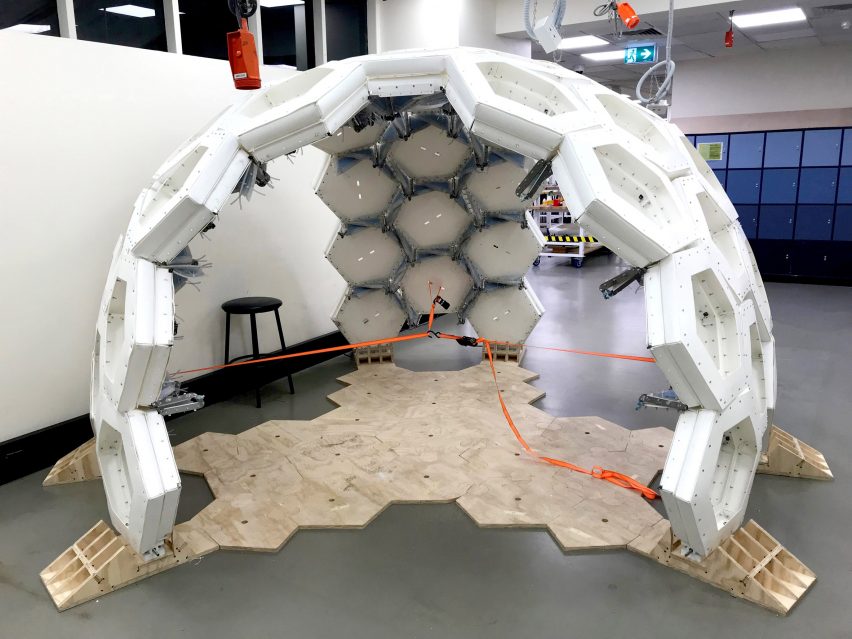
Centaur Pod by CODE students
"In cooperation with Arup Engineering Computational Design Bachelor, students in second and third year jointly developed, designed and fabricated a pod, a small internal meeting room, to test and investigate with our industry partner four expert domains: machine learning and AI, AR and VR, digital and robotic fabrication, and soft robotics.
"The project ran over one year with a total of five courses associated with it. The project tapped into five different courses for students to engage with various emerging digital technologies and produce, as teaching and learning outcomes, the Centaur Pod Pavilion."
Student: Multiple students
Project: Centaur Pod
Course: CODE – Computational Design
Course level: Undergraduate
Website: @centaurpod
Tutors: M Hank Haeusler, Alessandra Fabbri, Cristina Ramos, Belinda Dunstan, Design Futures Lab staff
Collaborators: Arup Engineering